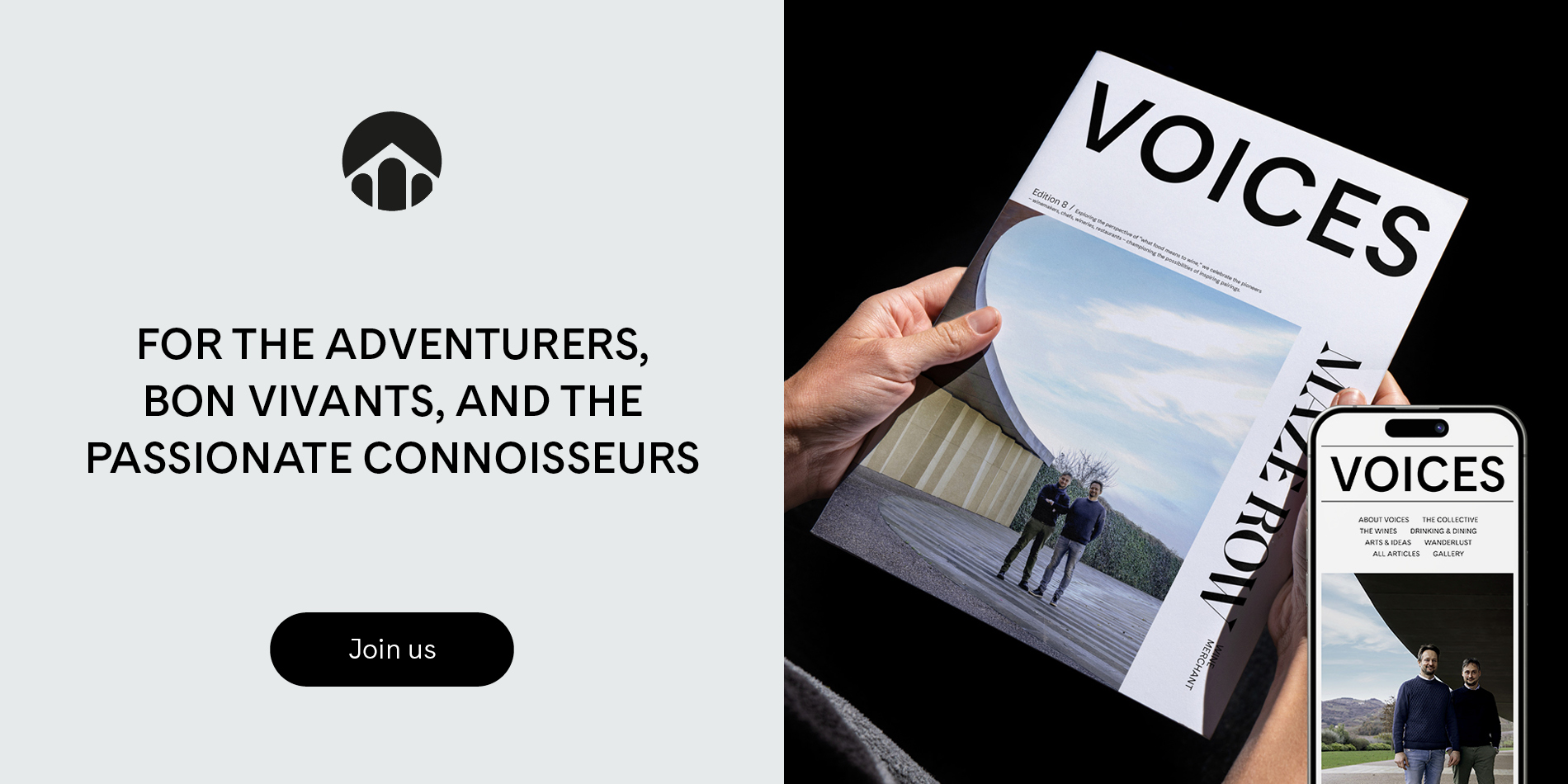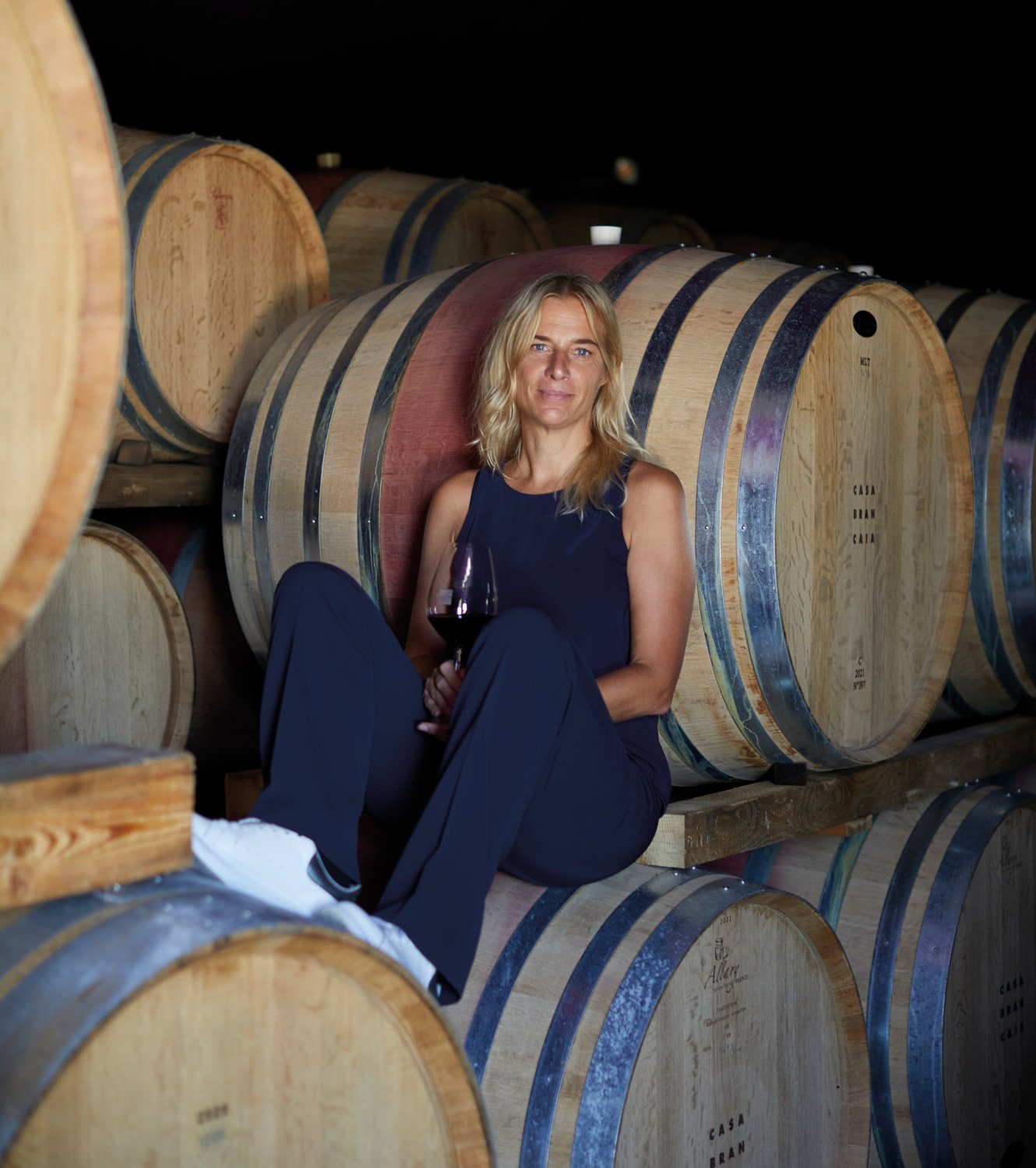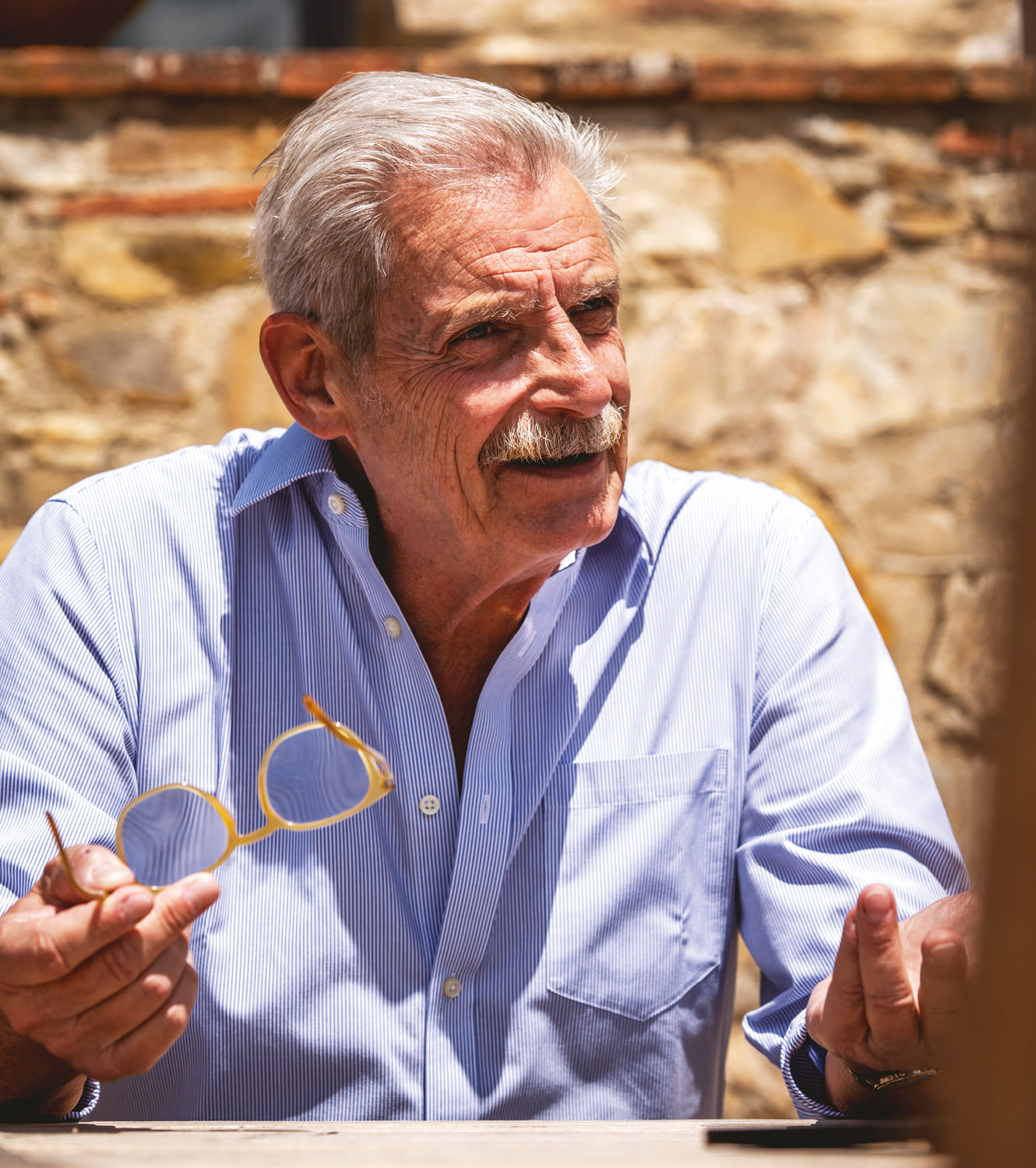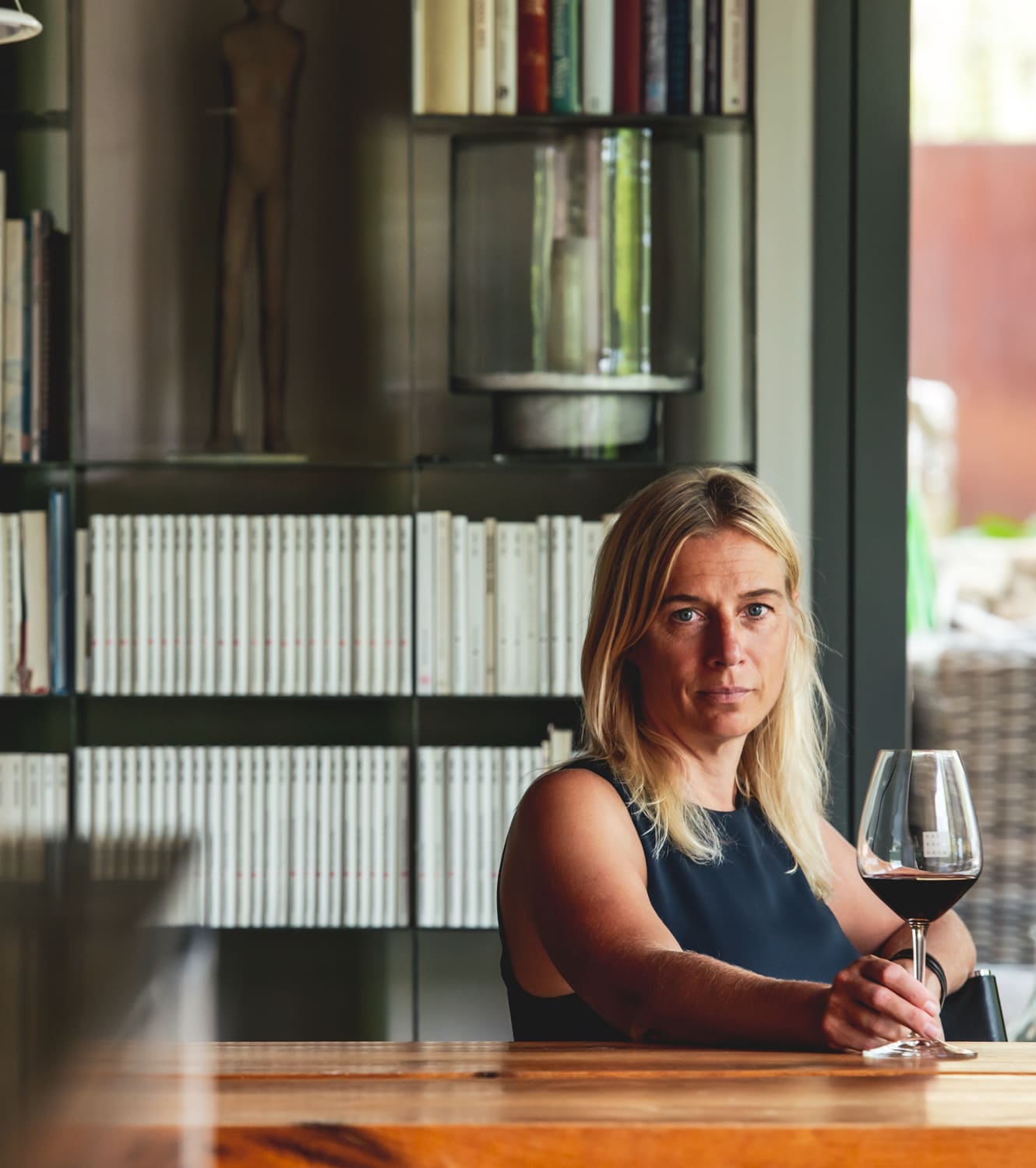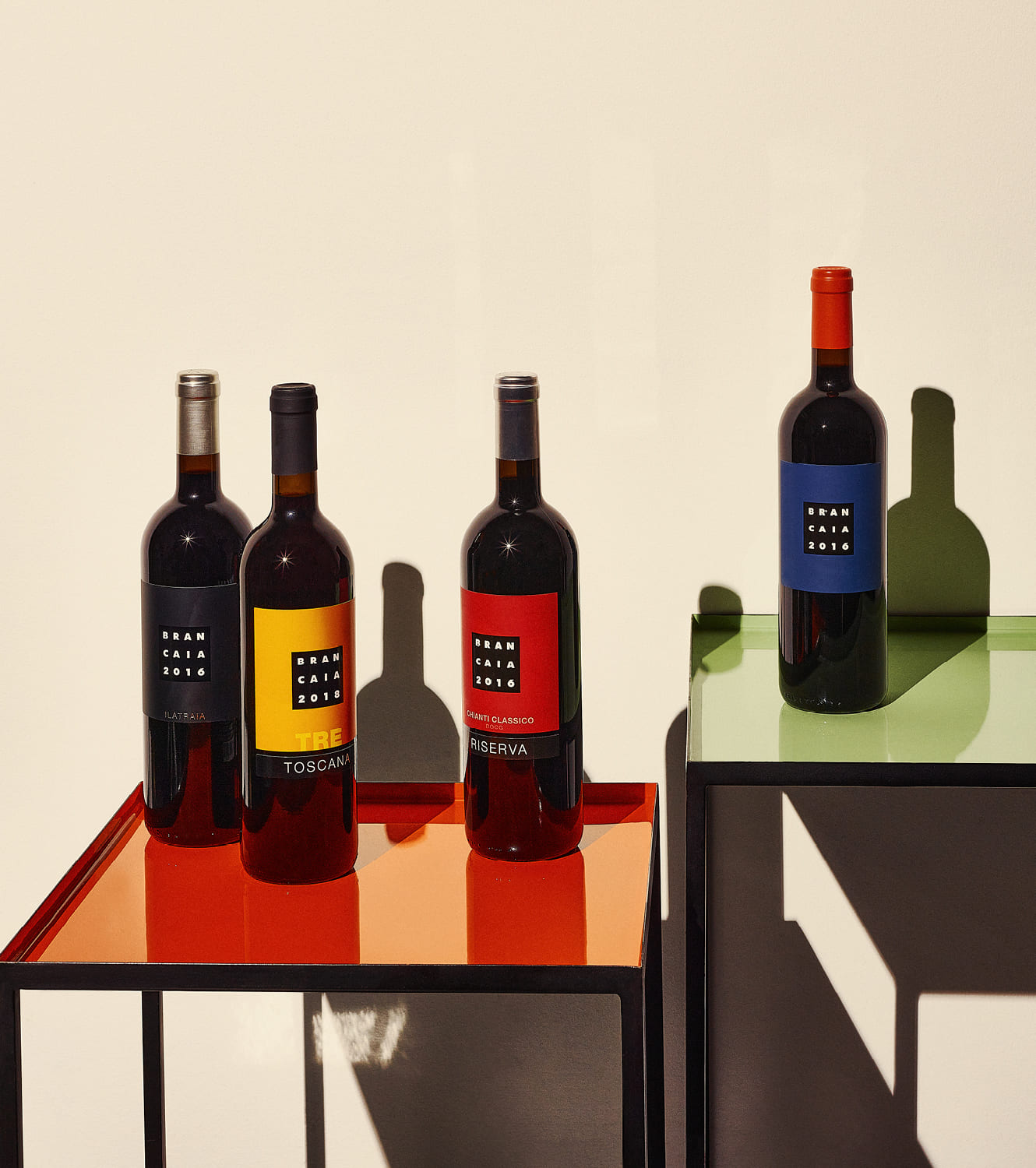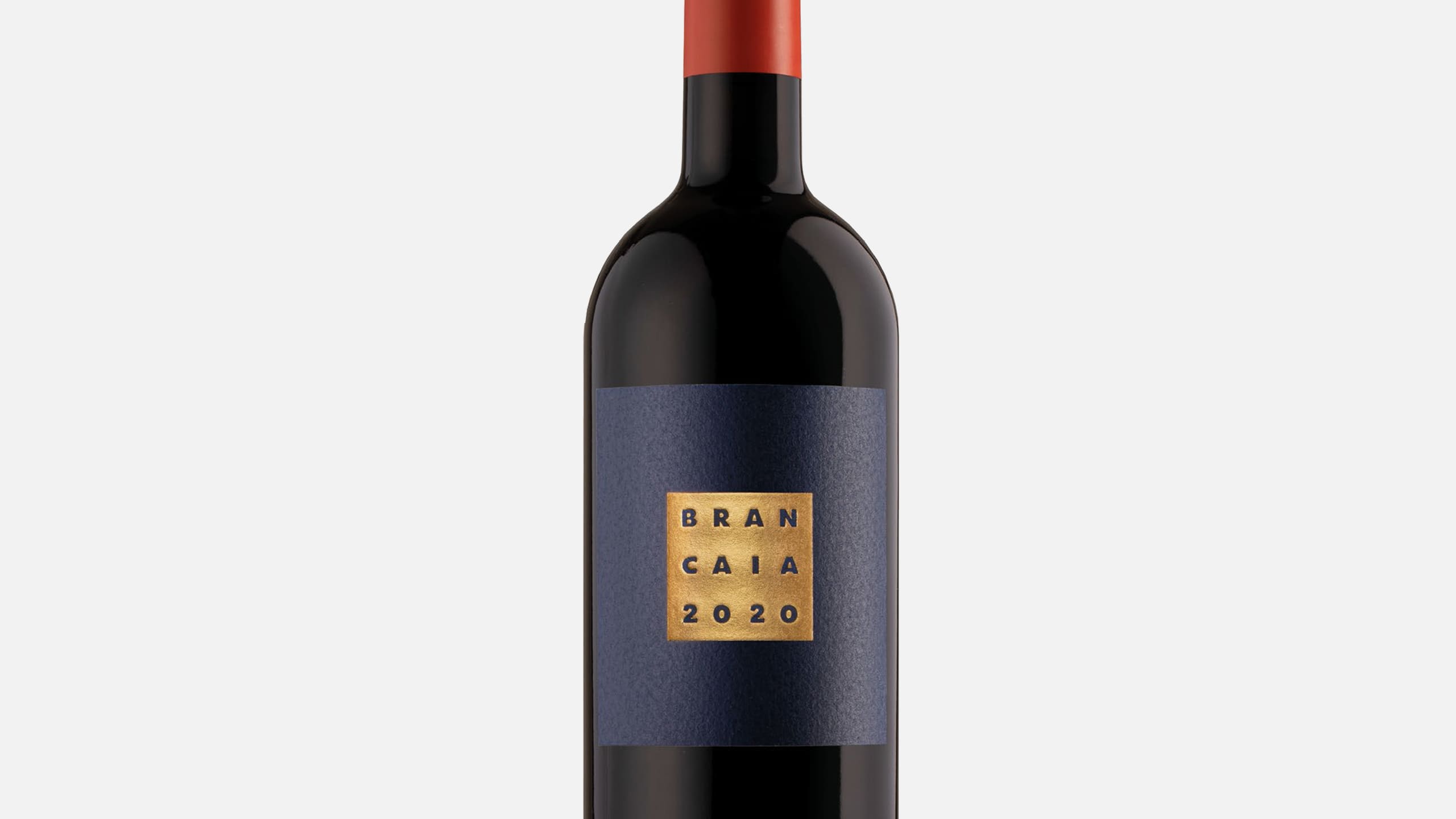
SUPER LEAGUE
Is it time to drop the name Super Tuscan and focus on quality? Cynthia Chaplin explores the new landscape of Italy’s most famous and prolific wine region
The creation of the original “Super Tuscans” in the early 1970s sprang from a rebellion against restrictive DOC/DOCG regulations, fired by a renegade spirit among a handful of prominent producers who had a vision for creating high-quality, internationally attractive wines. Chianti, in the beating heart of central Tuscany, and Bolgheri, on the southern shore of the region, provided the stage for Mario Incisa della Rocchetta and nephews Piero and Lodovico Antinori to experiment.
Aiming for Bordeaux-style blends, using international grapes not permitted in the denomination, yet often continuing to include native Sangiovese, this group of innovators crafted excellent fine wines that immediately shot to fame and fortune. Sassicaia, Tignanello, Ornellaia and Solaia became legendary, iconic wines and took on an identity all their own.
The name Super Tuscan is an invention of wine critics who needed a way to separate these new wines from more traditional Tuscan wines still following the regulations. The general consensus attributes the first mention of Super Tuscan to Robert Parker, the legendary wine critic, who scored the 1985 vintage of Sassicaia 100 points and declared he often confused the Italian wine with Mouton Rothschild from Bordeaux.
Over time, the Italian government caught on to the folly of denying these successful wines access to a denomination; however, the Super Tuscan category had by then developed its own identity and acclaim, leaving many producers unwilling to accept less scintillating denomination names, such as Toscana IGT. The handful of original rebels developed cult followings and spawned decades of copycats.
LABEL MATES
Ironically, 50 years later, we see a decline in interest in the vast sea of Super Tuscan wines that came on the heels of the truly visionary wines created at the start. Many of the best producers have turned their backs on the moniker, preferring to focus on the quality they achieve. In the March 2023 issue Food & Wine, winemaker Giuseppe Mazzocolin of Fattoria di Felsina puts it this way: “I think one of the problems is that Super Tuscans are misunderstood. These wines are not just the story of a vineyard or a grape but the story of a people who created something that is unique.”
Where does this leave us? On the one hand, fine wine consumers know the individual names of the iconic wines and request them by those names, rather than using the Super Tuscan umbrella. This indicates these consumers have sifted through this category of wine, chosen their favorites and don’t need the category to guide them.
As renowned wine writer, critic and judge Robert Joseph describes the situation: “There are three groups of people: the ones who know everything, or almost, such as producers, critics and collectors, for whom Super Tuscan is old hat. But there aren’t many of these. Then there are the people who know little or nothing about wine. There are lots of them, but they are irrelevant. Then there are the huge numbers who know a little and, for them, Super Tuscan may still have resonance when they look it up online.”
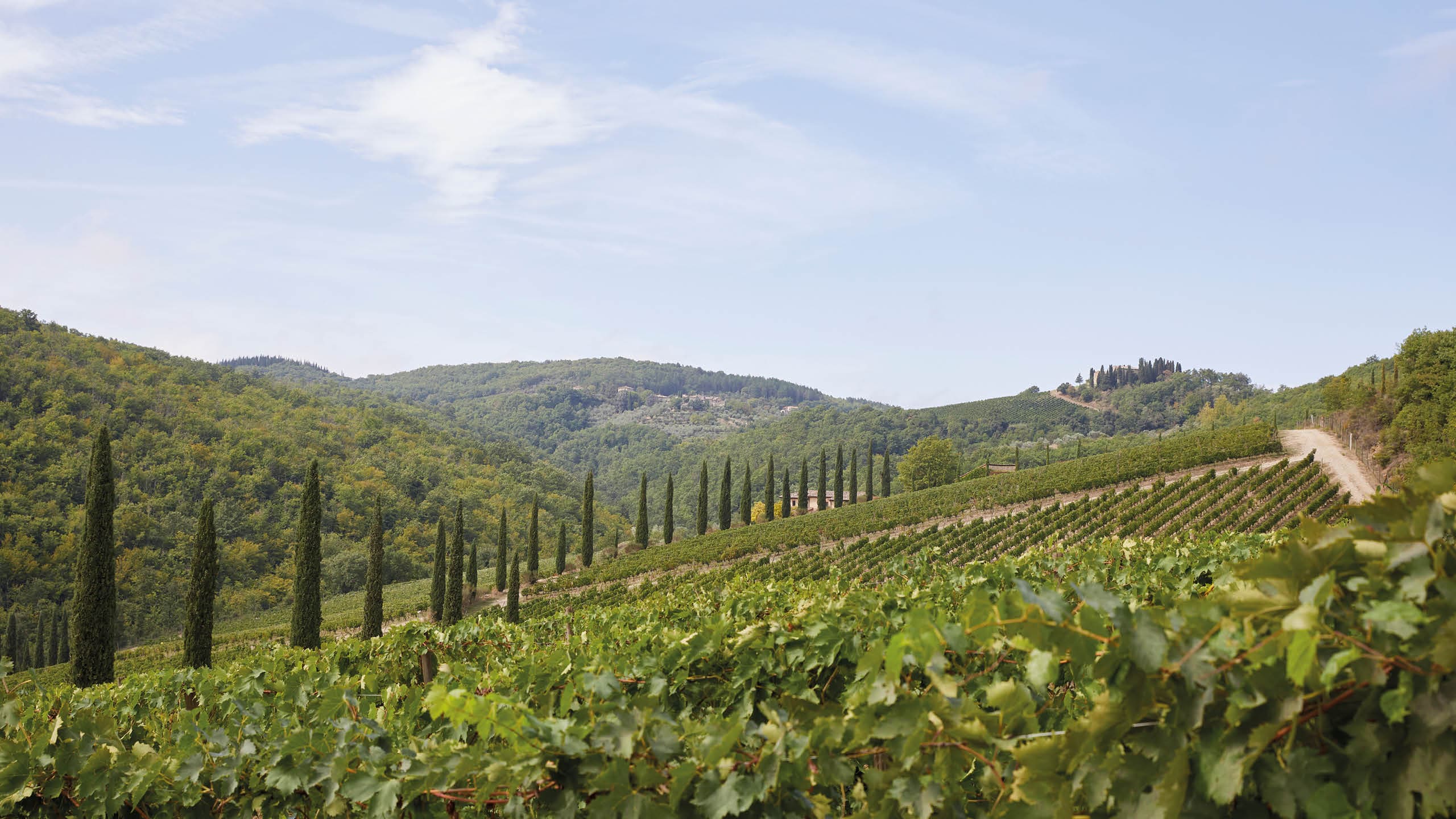
The Brancaia estate near Radda in Chianti, central Tuscany
THE NEXT CHAPTER
Confronted with these tiers of consumers, producers of wines such as Brancaia’s Il Blu, first made in 1988, now focus on the authenticity of the blend of native Sangiovese and international Merlot. The percentage has changed over time, gradually adding more Merlot and reducing the Sangiovese (the 2020 blend is 80 percent Merlot, 10 percent Cabernet Sauvignon and 10 percent Sangiovese) as Il Blu evolved into a wine that is truly tied to the territory. Brancaia’s Merlot vineyards are now over 30 years old, and the blend genuinely reflects the Tuscan terroir, rather than seeking to mimic a Bordeaux style.
Recent trends suggest the concept of identity and sense of place in wine is important to newer wine consumers who want wines made with native grapes expressing a unique terroir. Modern consumers also look for biodynamic or organic certifications and shy away from fanciful names and undecipherable labels lacking information about what is actually in the bottle. This trend plays into the hands of Tuscan producers who rebelled against the regulations that did not allow wines made with 100 percent native Sangiovese, as many current consumers now specifically seek out wines that are made with native grapes only.
Due to changes in the denomination in 1984, 1996 and 2006, the average quality of wine, especially in the Chianti Classico region, has improved dramatically. Investment, research into Sangiovese clones and support from the Chianti Classico consortium have led to the development of wines that show a clear Tuscan authenticity, exalting the fresh, earthy, floral and bright cherry notes expected from the best expressions of Sangiovese.
The regulations now allow single varietal Sangiovese wines but, like their Super Tuscan compatriots in Maremma and Bolgheri whose denominations now allow international varieties, the best producers continue to keep their top-quality wines outside the denomination. The focus is on finely crafted wines that speak with authority about their home and heritage.
As Bibi Graetz, famed for his eponymous winery near Florence, remarked in a May 2023 article by Wine Enthusiast: “Winemaking has changed, with less muscle, more elegance, less concentration and more smoothness.” Graetz uses purely native Tuscan grapes and says his “two wines were considered to fall within the Super Tuscan framework, yet they break the first rule of Super Tuscans. They were, and are, 100 percent Tuscan grapes.”
One last piece of the puzzle revolves around producers who took the Super Tuscan revolution all the way to the edge; with a legacy of hard work and determination, their international-style wines, made using no native grapes, have emerged as the purest descendants of the original vision.
Along Tuscany’s southern coast, Bolgheri wines such as Sondraia and Dedicato a Walter from Poggio al Tesoro give us a glimpse in the glass of the dreams and aspirations of the groundbreaking Super Tuscans such as Antinori and Incisa della Rocchetta. Both wines release a breath of Mediterranean seaside herbs, with structure and sophistication that whisper to us of the warm climate and stony soils that are the soul of Bolgheri. Although the grapes are not native to the area, these wines have become among the best ambassadors for the denomination.
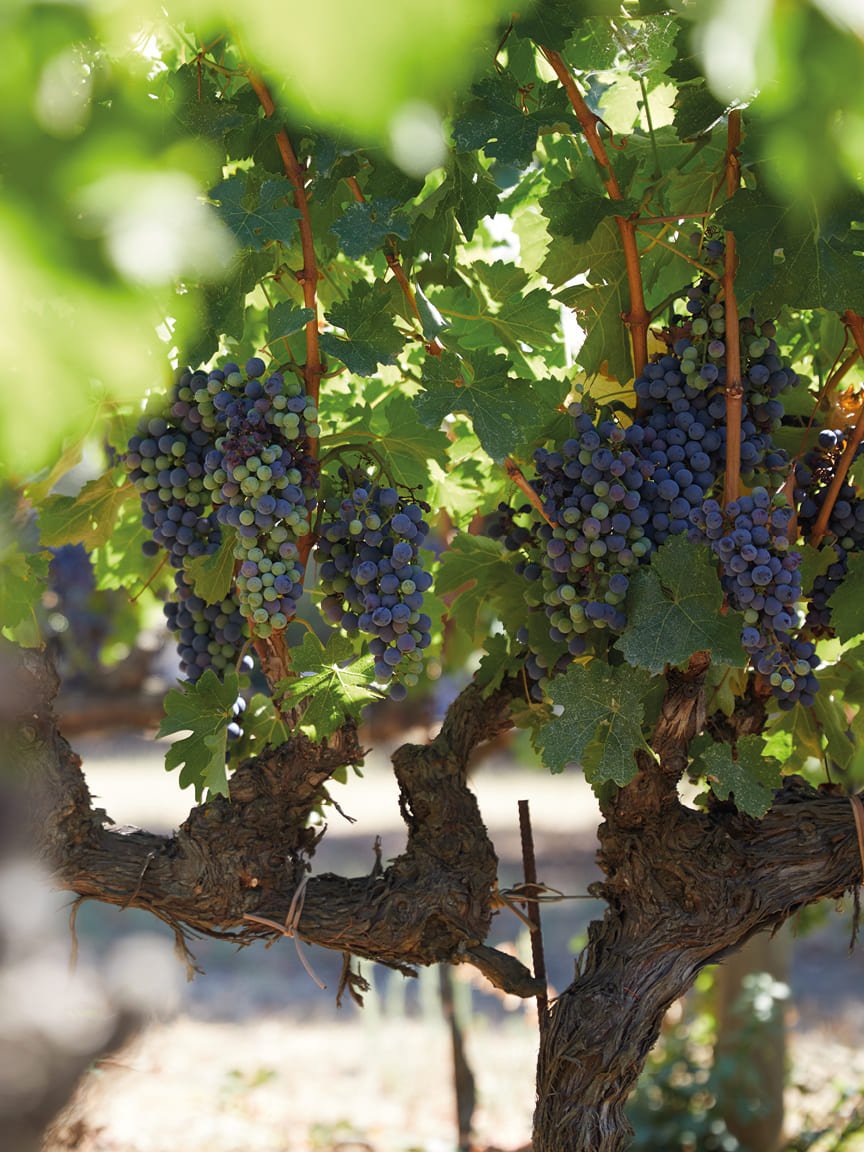
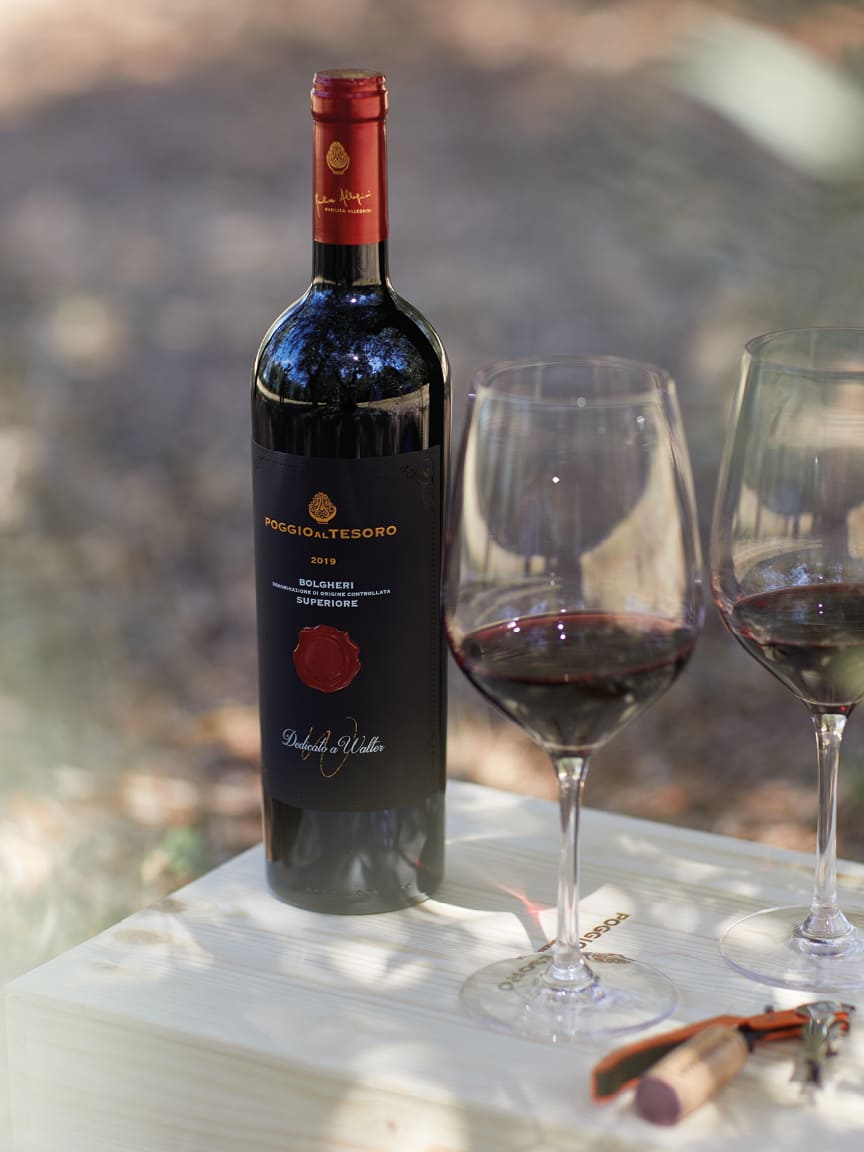
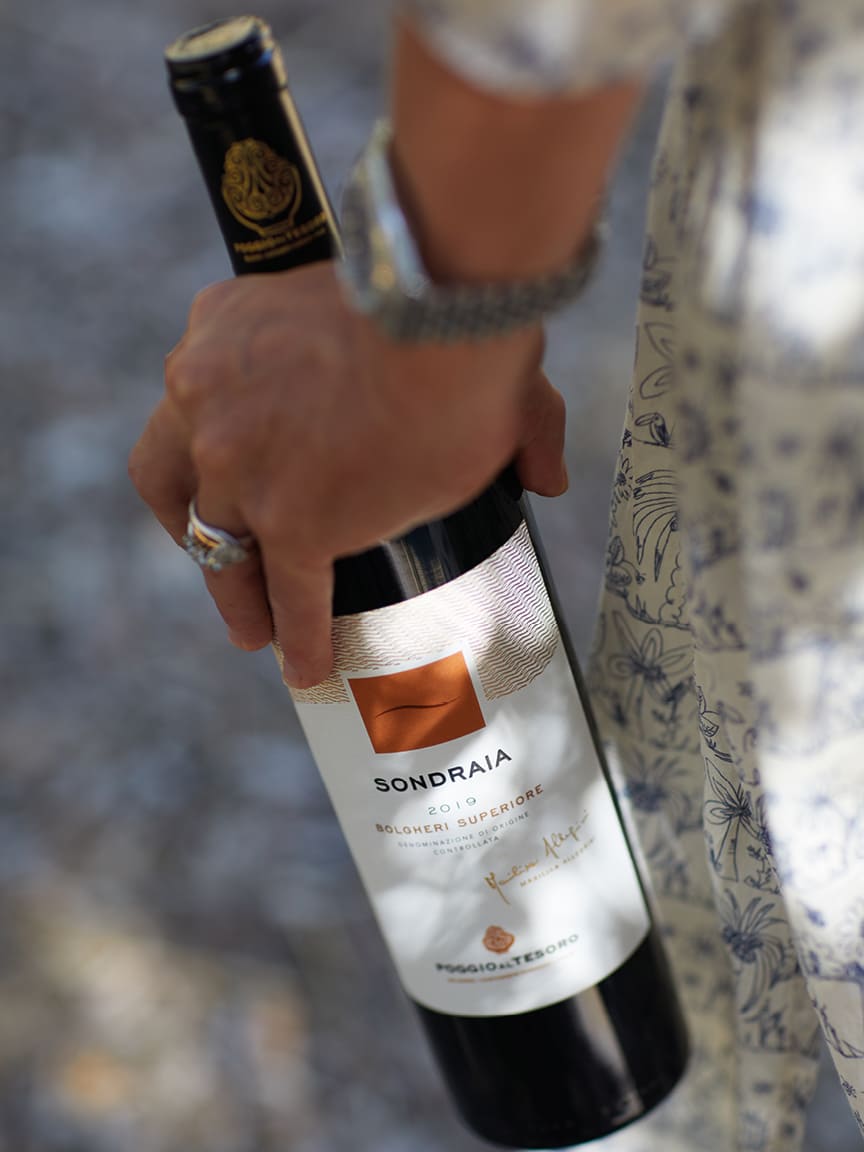
In Bolgheri, wines such as Poggio al Tesoro’s Sondraia and Dedicato a Walter give us a glimpse in the glass of the dreams and aspirations of the groundbreaking Super Tuscans
MIDDLE COURSE
Perhaps the most interesting way to approach the “should we or shouldn’t we” conundrum surrounding the Super Tuscan name lies in a beautiful middle-ground seen in wines like those of Argiano in Montalcino. At the crossroads of the Chianti, Brunello and Bolgheri denominations, Argiano’s Solengo is the perfect example of commitment to quality, tradition, location and creativity combined to reveal what could be the best next chapter for Super Tuscan wines.
A blend of Cabernet Sauvignon, Merlot, Petit Verdot and Sangiovese, this wine was nurtured by the epic hands of Giacomo Tachis in the early 1990s and has garnered rave reviews from the most experienced critics around the world. Could it be that breaking all the rules and throwing open the doors to experimentation has ultimately brought the very best producers in the region right back home to their roots?
Solengo and other excellent wines being produced nearby certainly point in that direction. In these bottles we find the essence of Tuscany, the hot dry summers that ripen the grapes, the diversity of soils, altitudes and aspects that Tuscany offers, as well as the influence of the sea and the impact of skilled winemakers devoting time and love to their work.
Do we need the Super Tuscan category anymore? Possibly not. Is it more detrimental than helpful when we talk about these wines? Potentially so. More importantly, it appears we should turn our attention to understanding and promoting these incredibly expressive, high-quality wines that have the power to transport us instantly to the beauty of Tuscany where they were born.
Cynthia Chaplin is a Professor of Italian Wine, WSET educator, and host on “Italian Wine Podcast”
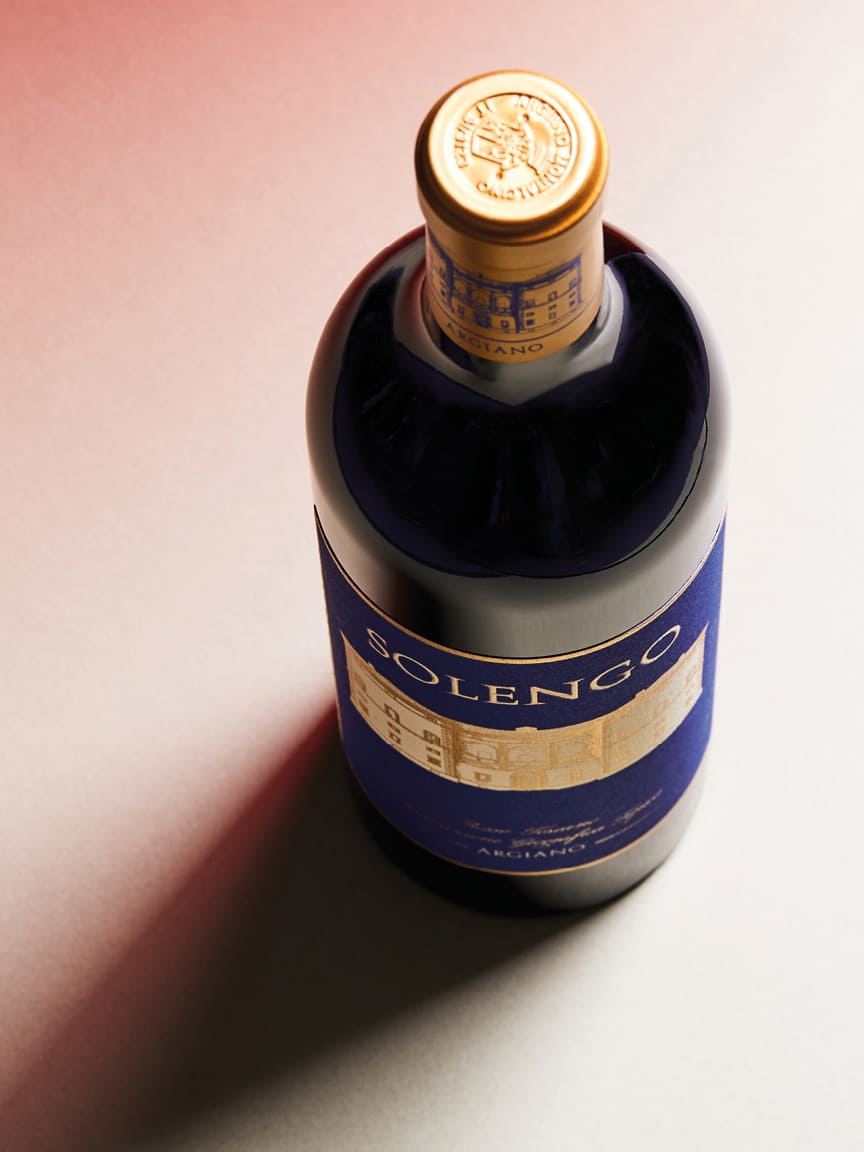
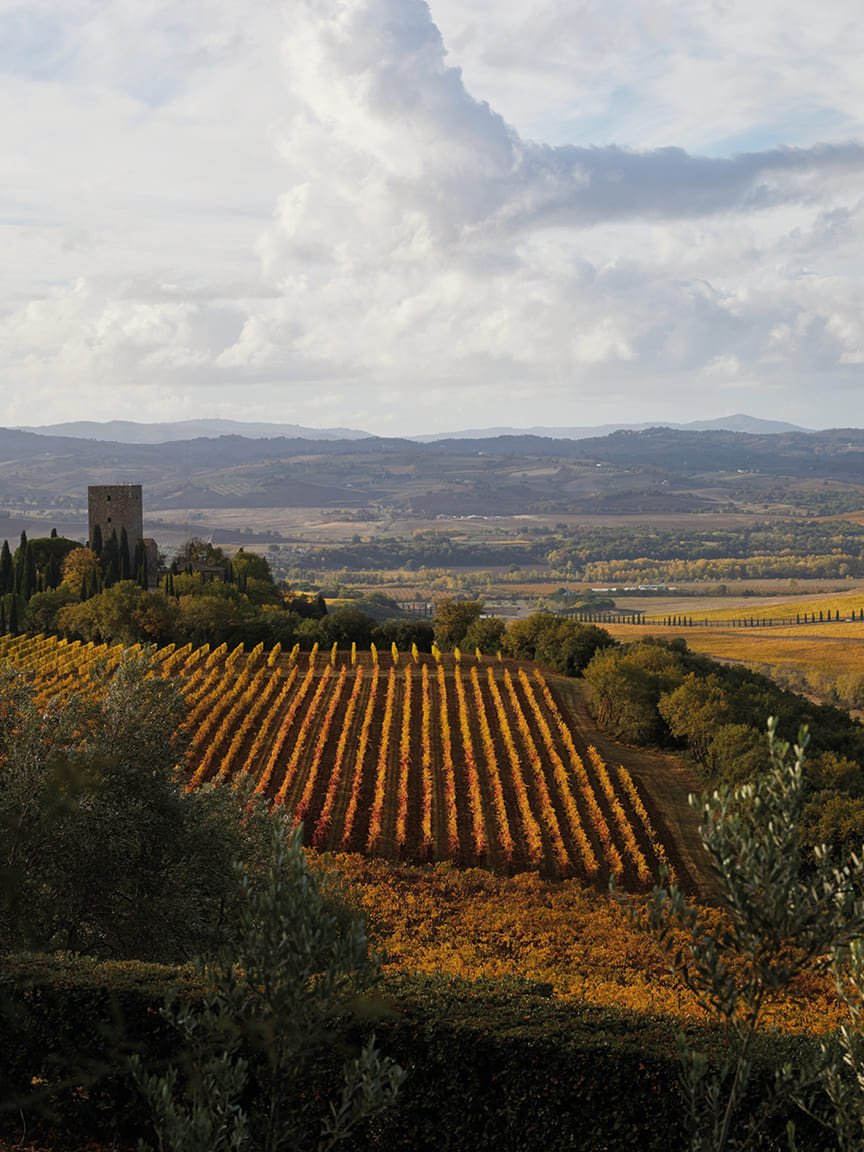
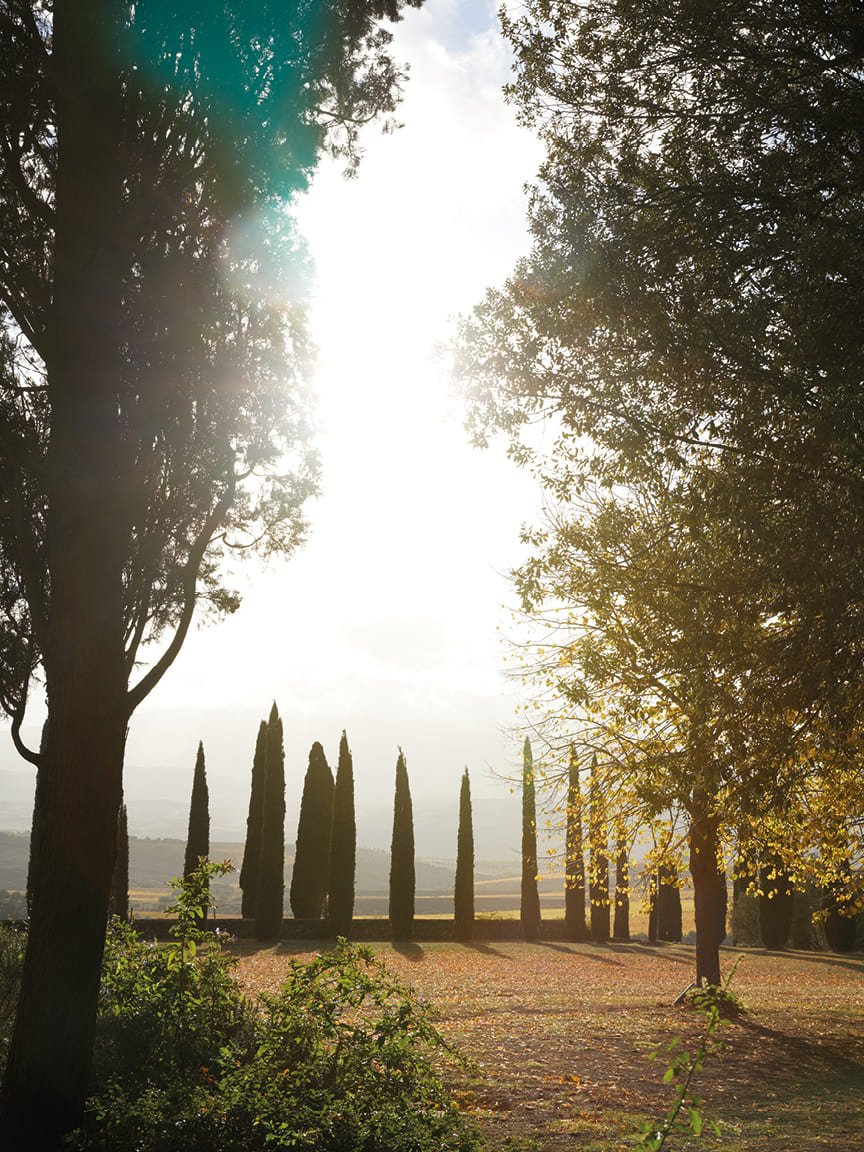
In wines like Montalcino winery Argiano’s Solengo we find the essence of Tuscany
SUPER TUSCANS
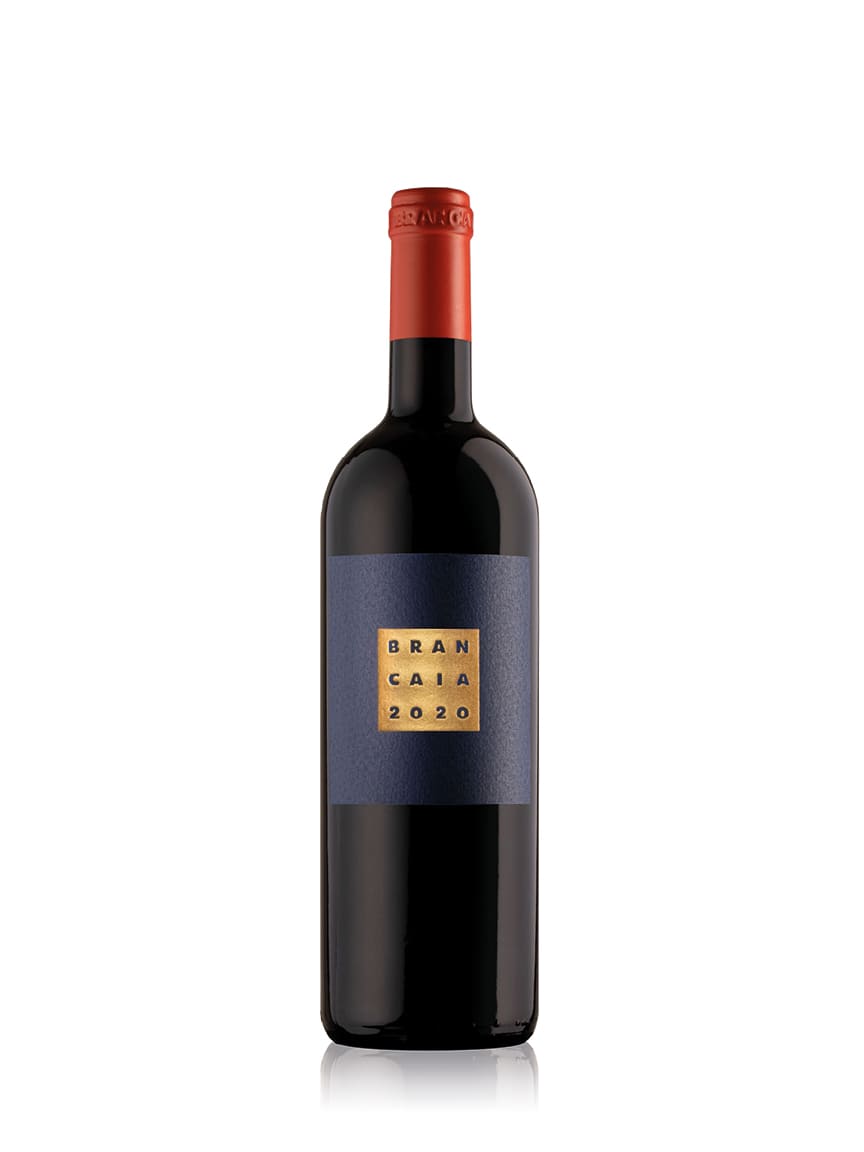
Il Blu 2020
Brancaia’s flagship expression, a Super Tuscan from vineyards in Chianti Classico. A blend of 80 percent Merlot, 10 percent Sangiovese, and 10 percent Cabernet Sauvignon. Estate grown from vineyards in Radda and Castellina in Chianti. Organic. 30 year old vines. Aged 18 months in new and used barriques, and three months in concrete.
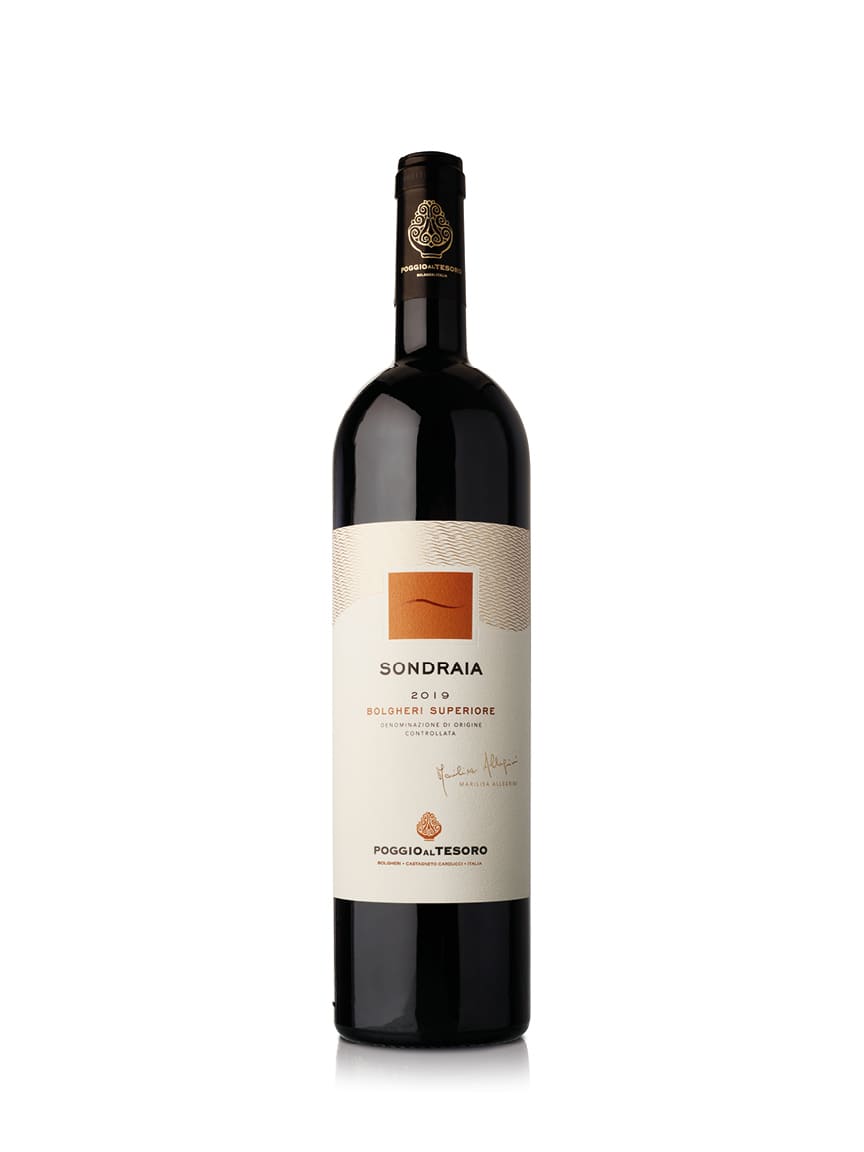
Sondraia 2019
Poggio al Tesoro’s flagship wine, a powerful and structured Super Tuscan. A blend of 65 percent Cabernet Sauvignon, 25 percent Merlot, and 10 percent Cabernet Franc from sandy clay and limestone soils. Estate grown. Organic. 20 year old vines. Aged for 20 months in 50 percent new and 50 percent second-use barriques, and nine months in bottle.
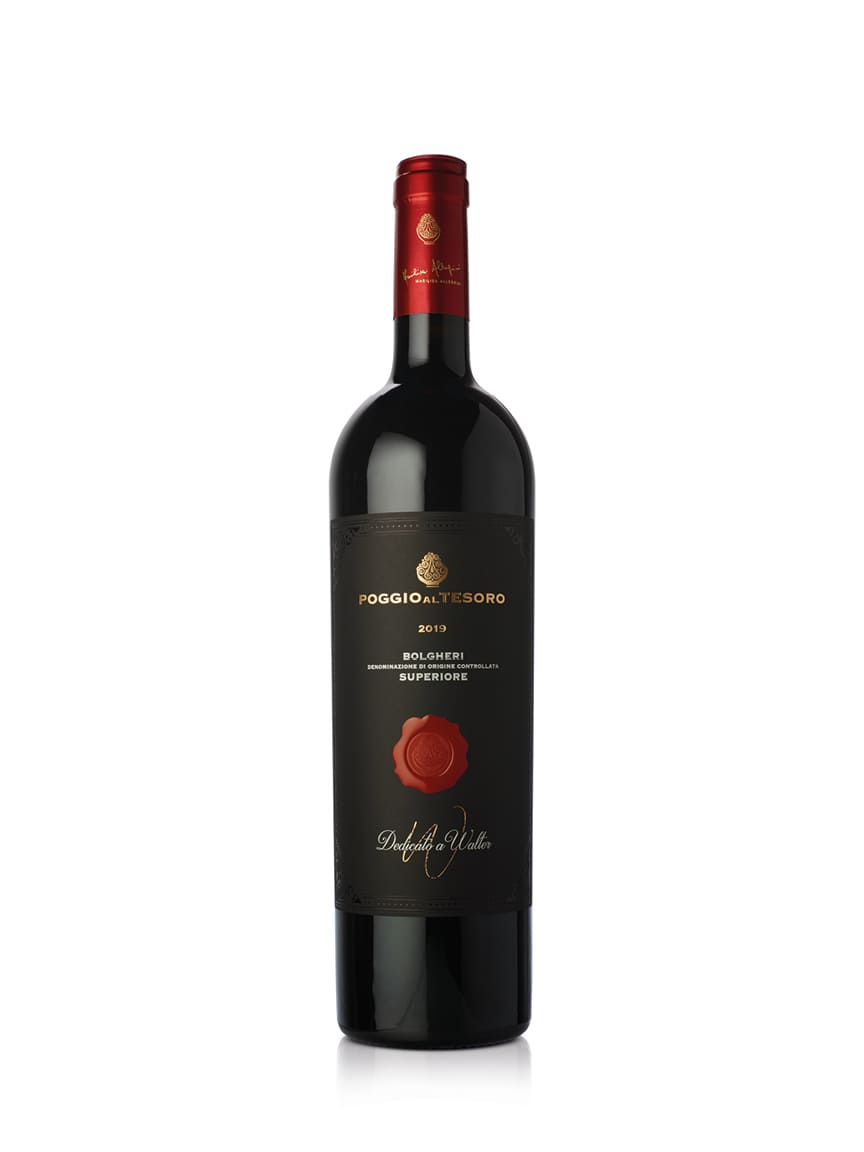
Dedicato a Walter 2019
Poggio al Tesoro’s top expression, a single-vineyard, monovarietal wine dedicated to Walter Allegrini, one of the founders of the estate who passed away in 2003. 100 percent Cabernet Franc. Estate grown. Organic. 30 year old vines. Aged for two years in new barriques.
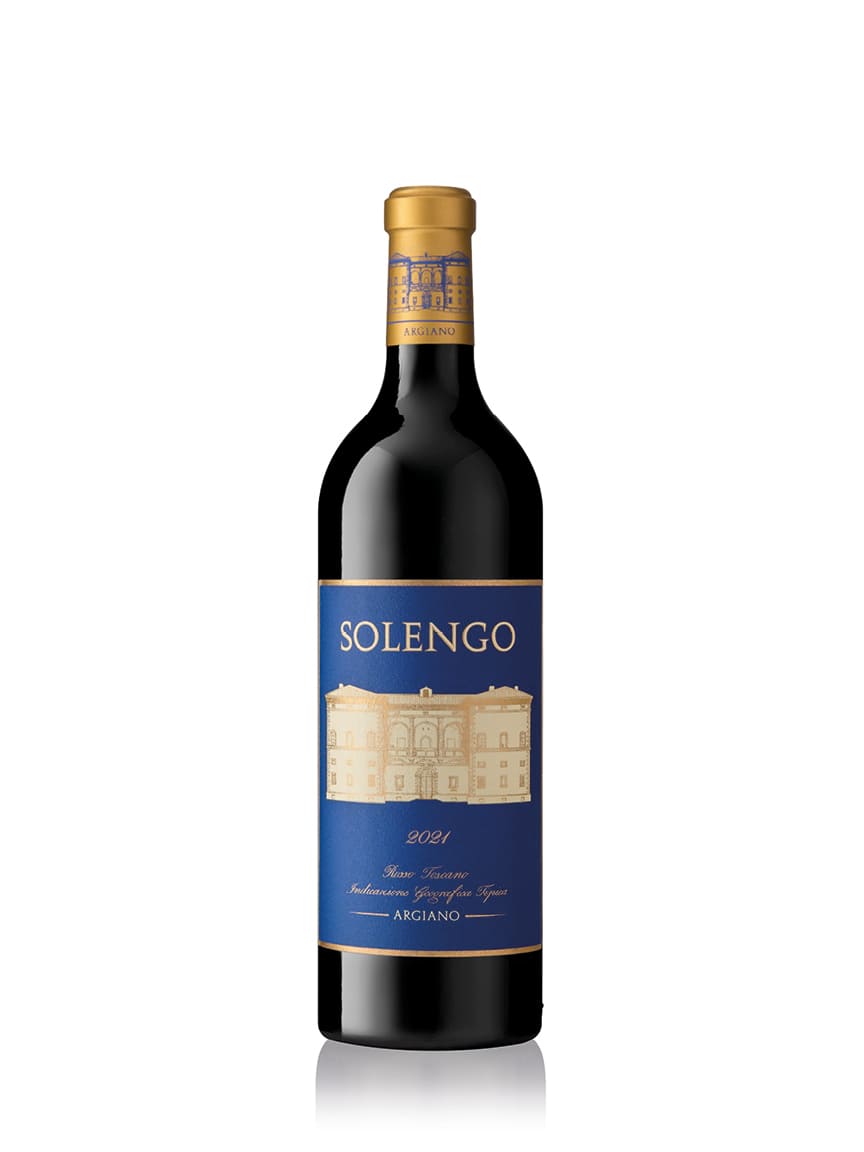
Solengo 2021
From the Argiano estate, the first Super Tuscan wine produced in Montalcino, and originally made by the legendary oenologist Giacomo Tachis. A blend of 50 percent Cabernet Sauvignon, 25 percent Merlot, 20 percent Petit Verdot, and five percent Sangiovese. Estate grown. Organic. 15-22 year old vines. Aged 18 months in 60 percent new and 40 percent second-use barriques.
Photography ©Helen Cathcart, Rob Lawson
We recommend
UNDER THE TUSCAN SUN
Swiss transplant Barbara Widmer has put down strong roots at Brancaia in the Chianti hills, where she aims to create wines that are an original expression of the local terroir. Nargess Banks visits the estate
STAR STUDENT
As Brancaia celebrates 20 vintages of its flagship Ilatraia, Chandra Kurt visits the dynamic Tuscan winery to see how consultant Carlo Ferrini’s mentorship helped Barbara Widmer forge her own path
BARBARA WIDMER IN CONVERSATION
Committed in her convictions about quality wine from healthy vineyards, Barbara Widmer, the owner and winemaker of the Tuscan winery Brancaia, tackles big environmental challenges one technique and one vine at a time
FIRST IMPRESSIONS
What does your bottle and label say about your winery? Abbie Moulton investigates how brands are rethinking packaging in terms of both style and substance
